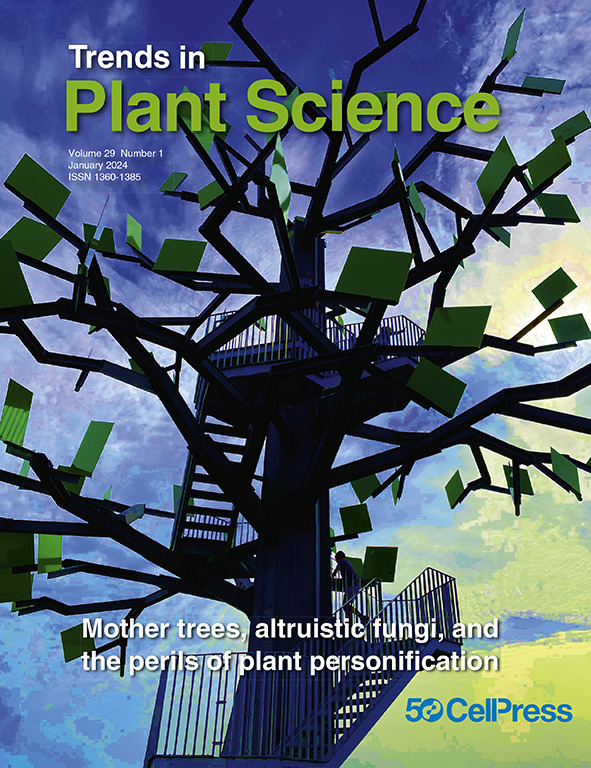干分支:ros触发的基于Aux/IAA多媒质的自适应策略。
IF 20.8
1区 生物学
Q1 PLANT SCIENCES
引用次数: 0
摘要
植物调节根系形态、结构和相关分子途径以应对缺水条件的机制尚不完全清楚。最近,Roy等人阐明了一种被称为干分枝的适应性状的新方面,它在微调干旱适应中起着关键作用。本文章由计算机程序翻译,如有差异,请以英文原文为准。
Xerobranching: a ROS-triggered Aux/IAA multimerization-based adaptive strategy.
The mechanisms by which plants modulate root morphology, architecture, and the associated molecular pathways to cope with conditions of water deficit remain incompletely understood. Recently, Roy et al. elucidated novel aspects of an adaptive trait, termed xerobranching, which plays a critical role in fine-tuning drought adaptation.
求助全文
通过发布文献求助,成功后即可免费获取论文全文。
去求助
来源期刊

Trends in Plant Science
生物-植物科学
CiteScore
31.30
自引率
2.00%
发文量
196
审稿时长
6-12 weeks
期刊介绍:
Trends in Plant Science is the primary monthly review journal in plant science, encompassing a wide range from molecular biology to ecology. It offers concise and accessible reviews and opinions on fundamental plant science topics, providing quick insights into current thinking and developments in plant biology. Geared towards researchers, students, and teachers, the articles are authoritative, authored by both established leaders in the field and emerging talents.
 求助内容:
求助内容: 应助结果提醒方式:
应助结果提醒方式:


